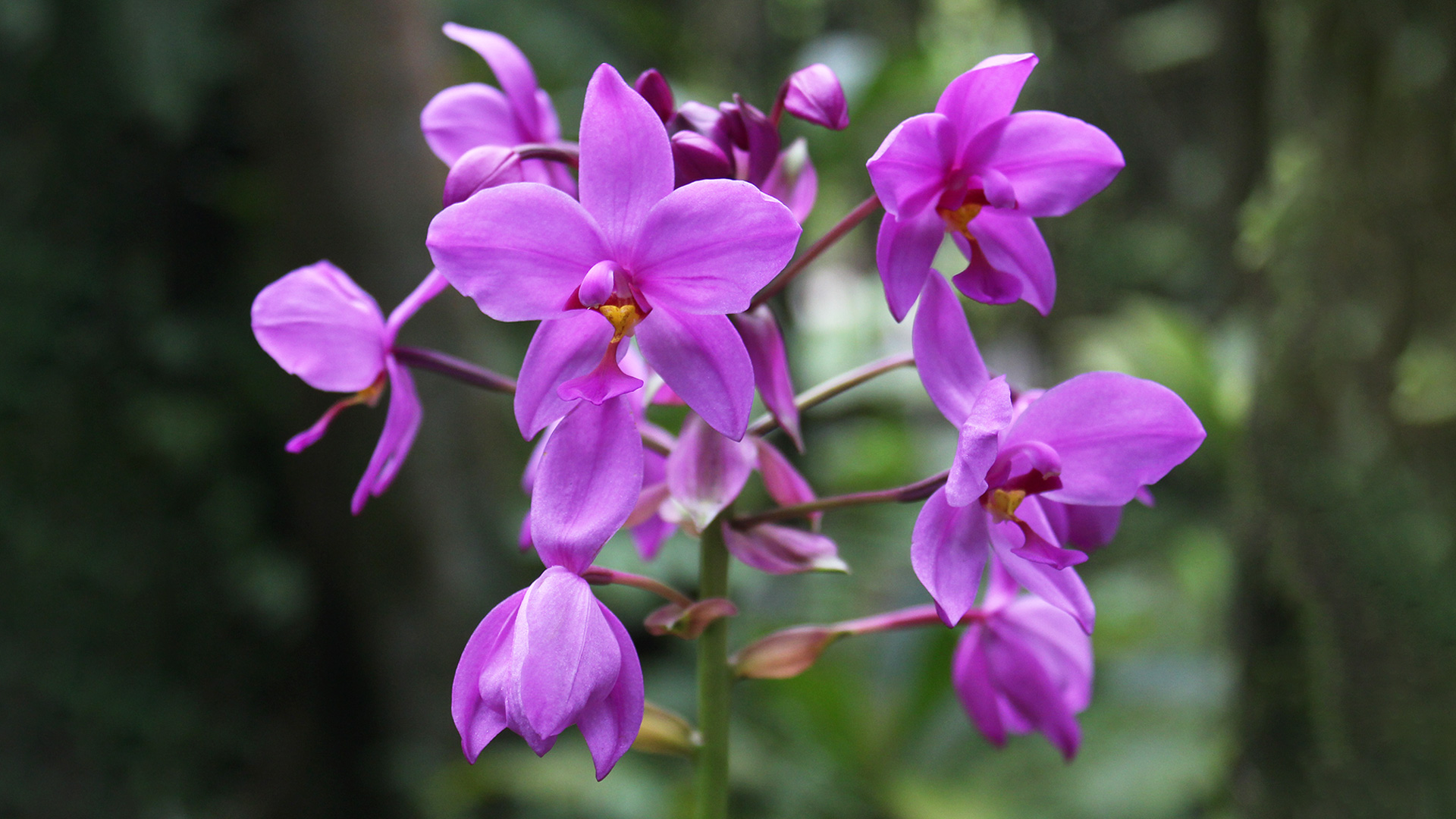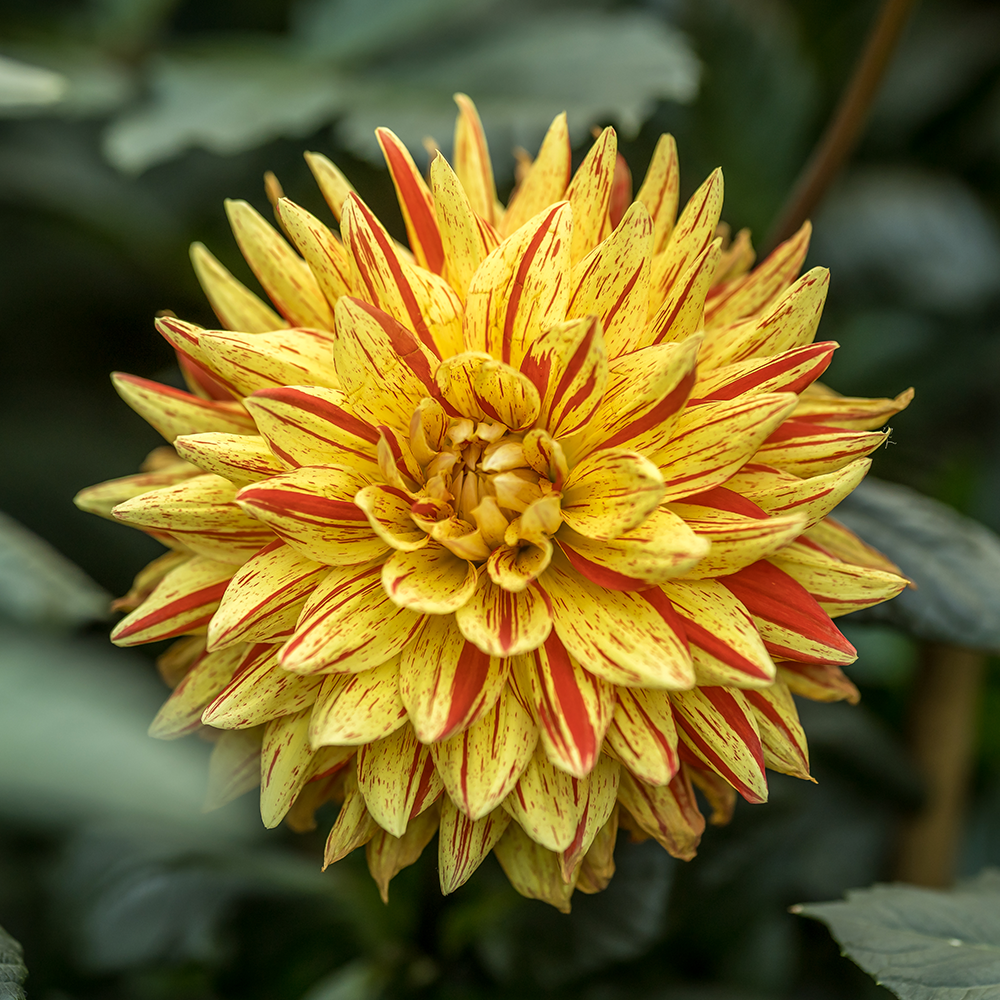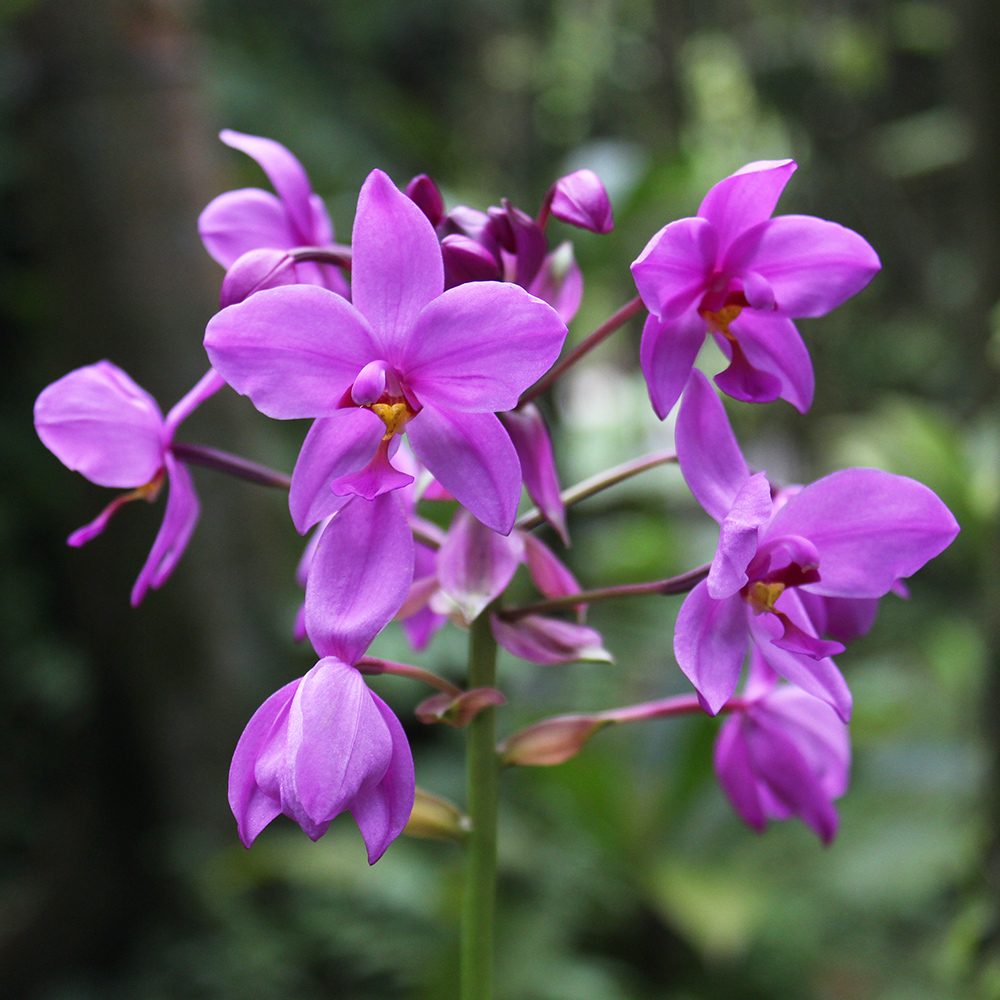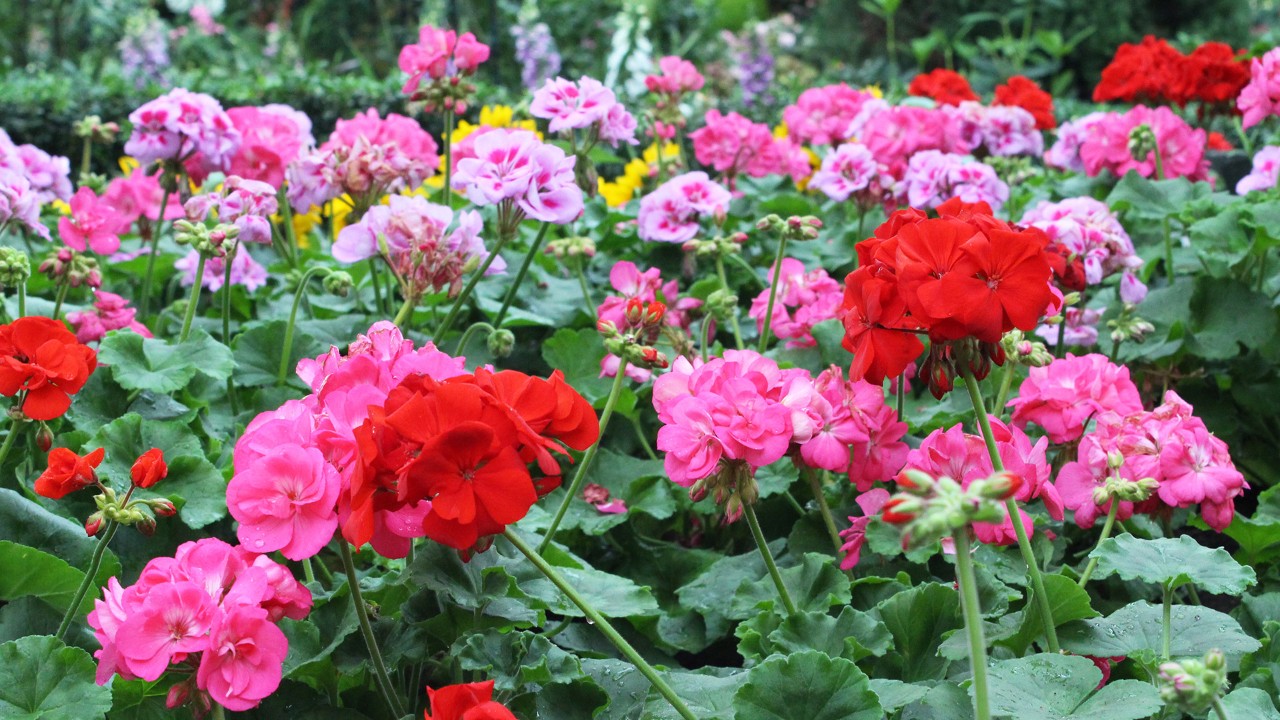
Garden geraniums are cultivated varieties of the genus Pelargonium, which belongs to the geranium family, Geraniaceae. The genus Pelargonium contains about 280 evergreen species of annuals, perennials, and succulents native throughout the temperate and subtropical regions of the world, largely in South Africa and southern Australia. They became a popular Spanish ornamental due to their inherent adaptation to the Mediterranean-type climate in their native regions and ease of cultivation as potted plants!
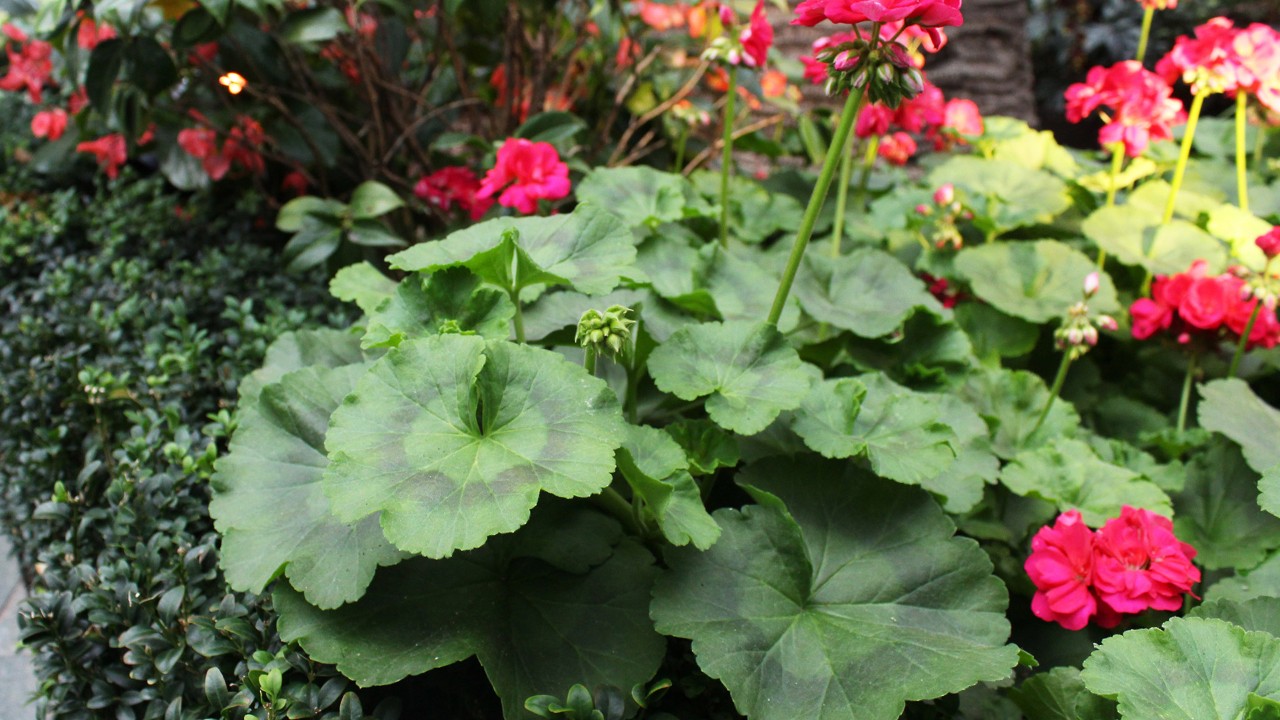 Pelargonium ‘Survivor® Red’ with distinct, dark horseshoe-like markings on the leaves. The patterns of the leaves are inherited from Pelargonium zonale, one of the primary parent species of all zonal geraniums.
Pelargonium ‘Survivor® Red’ with distinct, dark horseshoe-like markings on the leaves. The patterns of the leaves are inherited from Pelargonium zonale, one of the primary parent species of all zonal geraniums.
Garden geraniums are also known as zonal geraniums, named for the different coloured ‘zones’ or the horseshoe-shaped markings across the leaves. Despite that distinct characteristic, these plants are more well known for their brightly coloured flowers by both gardeners and non-gardeners alike! Botanically classified as Pelargonium × hortorum—from Latin hortus meaning ‘garden’ and thus, the common name “garden geraniums”—they are complex crosses between the South African natives, P. zonale and P. inquinans, of which the former is responsible for the patterns of their leaves.
![Compare the clustered, bilaterally-symmetrical flowers of the garden geranium (Pelargonium spp. and cultivars) [L] to the single, radially-symmetrical flower of the true geranium (Geranium spp. And cultivars) [R].](/en/learn-with-us/explore-resources/whats-blooming/garden-geranium/_jcr_content/root/container/container_copy/container/container_copy/image_1083717507_cop.coreimg.jpeg/1665389151340/garden-1920x1080px.jpeg) Compare the clustered, bilaterally-symmetrical flowers of the genus Pelargonium [L] to the single, radially-symmetrical flower of the true geranium (Geranium spp. and cultivars) [R].
Compare the clustered, bilaterally-symmetrical flowers of the genus Pelargonium [L] to the single, radially-symmetrical flower of the true geranium (Geranium spp. and cultivars) [R].
So here’s the big question: why do we call pelargoniums geraniums?
In the past, the genus Pelargonium did not exist; they were placed together in the genus Geranium and all of them were collectively known as ‘geraniums’. It was only in 1789 that Charles Louis L'Héritier de Brutelle, a French botanist, decided that there were enough differences between these South African ’geraniums’ and the rest that he separated them into the two genera we know today. Despite this change, the common name ‘geranium’ still stuck around for both genera, much to the dismay of botanists and pedantic gardeners—including myself despite my usage in this article.
While both Pelargonium and Geranium have five-petaled flowers, you can distinguish the two by their distinct petal arrangement. Pelargonium flowers are zygomorphic (bilaterally symmetrical) with a distinction between the upper two and lower three petals. True geraniums (Geranium spp.) are actinomorphic (radially symmetrical), having equally-sized and equally-spaced petals.
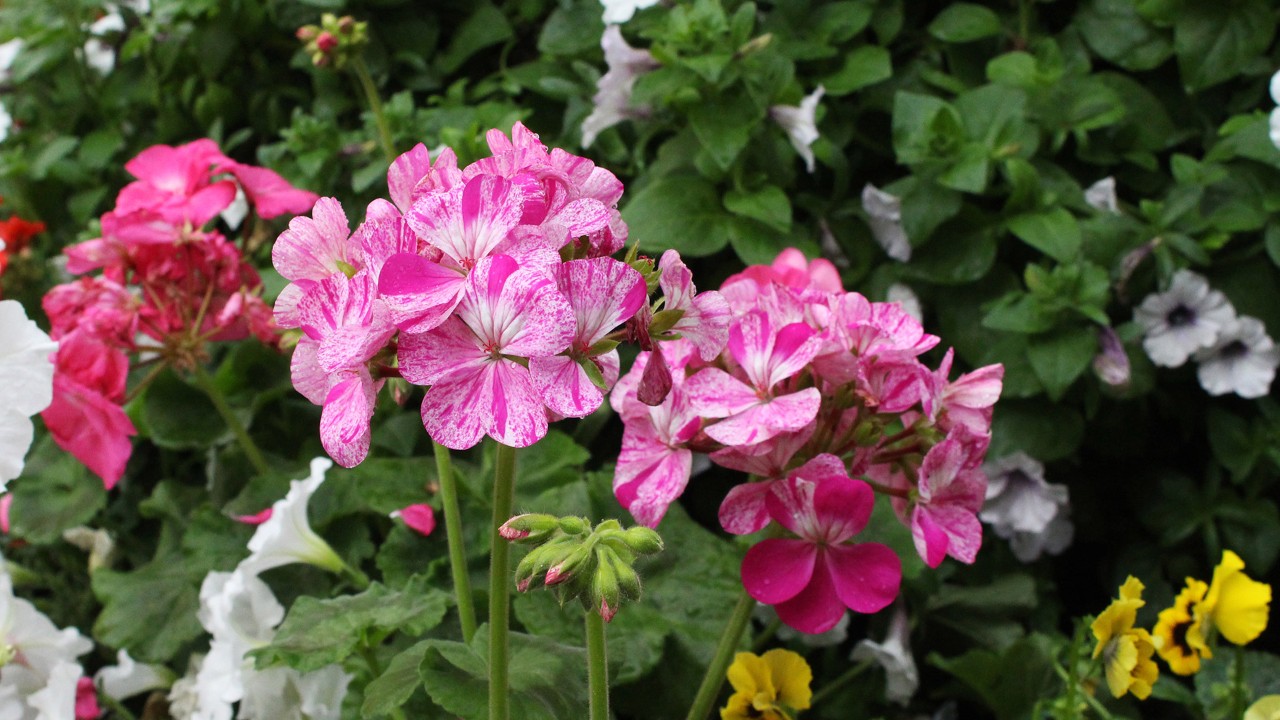 One of the more fancily-patterned flowers belongs to Pelargonium ‘Survivor® Pink Batik’, with colours and streaks that vaguely remind me of the old-school strawberry ripple ice cream.
One of the more fancily-patterned flowers belongs to Pelargonium ‘Survivor® Pink Batik’, with colours and streaks that vaguely remind me of the old-school strawberry ripple ice cream.
In this month’s display, A Spanish Serenade with Sunflowers, all of our garden geraniums were grown in-house here in Singapore! Unlike many of the plants that were grown for our displays previously, these plants were grown from cuttings, not seeds! By using cuttings, we can ensure flower and plant uniformity and speed up the cultivation process by several weeks! Most of the cultivars here are from the Survivor® series, with colours ranging from reds, oranges, pinks, and white, including the ‘Pink Batik’ pictured above!
Pop by the Flower Dome during this month of October and come see these colourful Pelargonium cultivars among the fields of sunflowers and other popular Spanish favourites, such as petunias and roses!
Written by: Hazri Boey, Senior Horticulturist (Gardens Operations)
Hazri not only surrounds himself with plants at work; he has an abundant collection at home too! Having nurtured a keen interest in nature since young, he might have gone on to become a zookeeper caring for owls or sloths had it not been for his plant identification talent!
